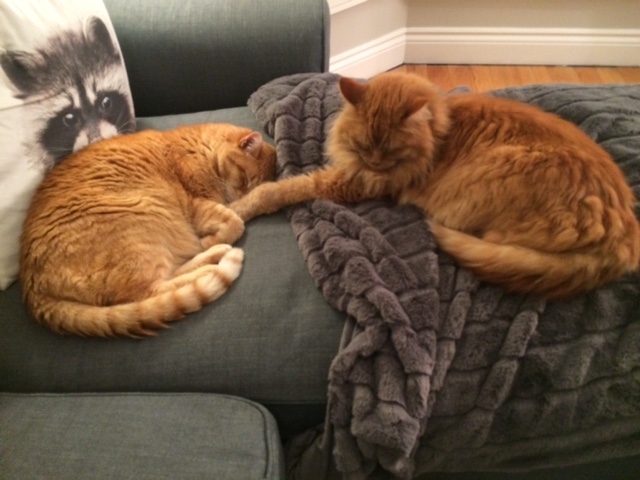
The other day, I did a walk-up curbside pick-up at the library to collect two books I borrowed for my English 1002 course. Although there was only one copy of each in the library, they were easy to reserve and, I hope and expect they will be easy to renew if required. They are Slaughterhouse Five, by Kurt Vonnegut (first published in 1969), and A Raisin in the Sun, a play by Lorraine Hansberry, which came out in 1959 and still has a card pocket in the inside of the front cover, complete with card showing borrowings from 1974. These books have seen more eyes than a tractor trailer full of potatoes. Stick with the tour. This information will become relevant shortly. I promise.
English 1002 is a typical English literature survey course, except now English literature survey courses have new names. This one is about “intertextualities.” I am pretty sure this concept did not exist in 1974 when I took my first university English course, much like the five-paragraph essay did not exist back then. If you look it up (and don’t worry, I did it for you), intertextuality means “the relationship between texts, especially literary ones.” This gives me some comfort, because I am reading literary texts and hope to find some relationship between them. This does not fully explain English 1001, which I took in the fall, that spent a considerable amount of time exploring the relationship between the works we read, but was not called “intertextualities.” Some further inquiry shows the concept of intertextuality surfaced in conjunction with post-modernism in the mid-1960s, which explains a lot. I have been living in the intertextual era all along, but like the frog that basks in the gently heating hot water bath, I never noticed when it boiled over into a “thing.”
I bought two of the books on the reading list for English 1002, The Brief Wonderful Life of Oscar Wao by Junot Diaz, and Blood and Guts in High School, by Kathy Acker. I bought the former because it sounds like the type of thing I might re-read. I bought the latter because it is apparently too avant-garde for the average public library. Or at least for the average suburban public library. Google it and you’ll see why. I think my professor is taking a big risk of offending the millennial snowflakes in the class, but that’s his problem.
Anyhow, when I went to collect my library books, I got the typical borrowing receipt that tells you when they are due back. This is what it said: “You just saved $46.55 by using your library card. You have saved $46.55 this year, and $104.42 since you began using the library!” I cannot begin to tell you how many things are wrong with this. Let’s start here. How were the “savings” calculated? The Vonnegut book has a (1994) cover list price of $35 (Canadian). The Hansberry book has no price evident (hardcover, though). Does the library use cost per page read? Fractional, temporary ownership of the book, amortized over the useful life of the text? I do not know. Further, this library assumes that I am library monogamous. I am not ashamed to say I am not. This particular library system is way down on my list of go-to book borrowing sources. So, no, I actually did not begin to use “the library” when I acquired this particular library card. This library apparently also does not understand the grammatical nuances of the definite article. Our library? Okay. The library? A little narcissistic.
The major thing that’s wrong with this, though, is the library clearly does not understand how writers get paid. Some miniscule amount of the $35 (which probably was not $35 but some discounted price) the library paid for Slaughterhouse Five did make its way into Kurt Vonnegut’s pocket. Then, over the twenty-five years since the (1994) twenty-fifth edition of the book, I would think more than a few people borrowed the book instead of buying it. There is a thing called “public lending rights” that pays authors for circulation in libraries, but the fine print kind of nullifies that benefit for most of us. This system uses representative libraries to calculate the payment. Your book must be in circulation in the sampled libraries (for example, Toronto Public Library, Ottawa Public Library) used to determine potential payment, and the payment due must be at least $50. I certainly do not feel sorry for Mr. Vonnegut nor Ms. Hansberry who have both profited extensively during the run of their best-selling success. Who I do feel sorry for is authors like me, especially when a library uses cost-savings as its call-to-action. My outraged letter is on its way. Just as soon as I’m finished the books.

The library in AZ I used dud the thing, telling me what a bargain I was getting
I think the introductory English class labeled “intertextualities” is related to your library informing you how much you saved by borrowing books. Both are the products of bureaucrats trying to inflate their worths.
Big time, Dan.